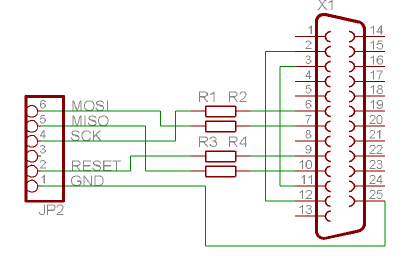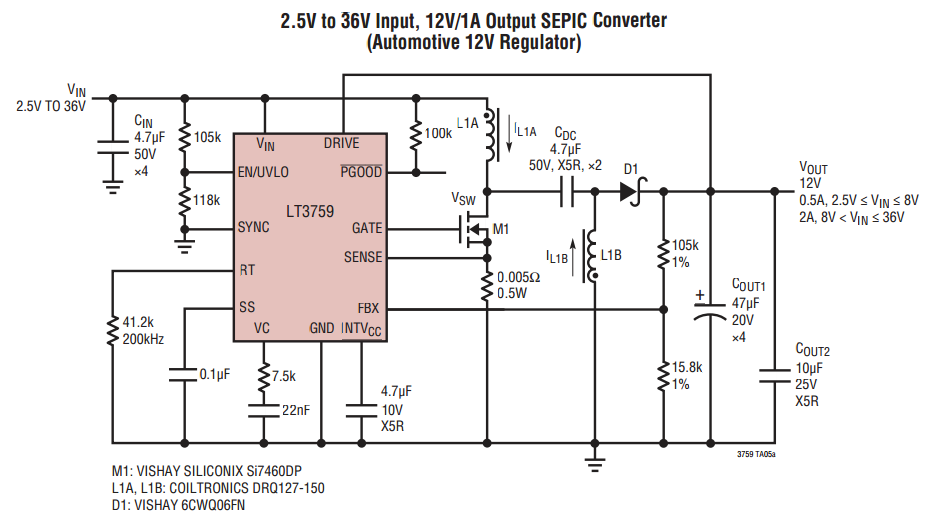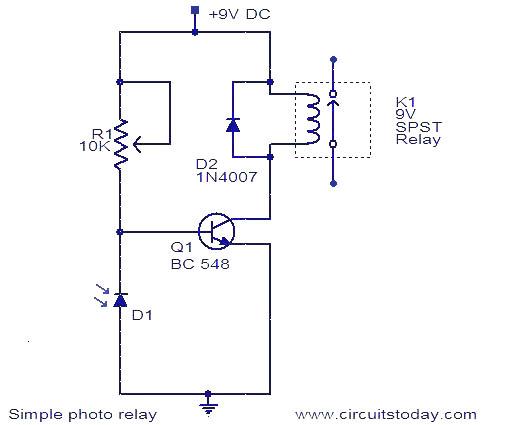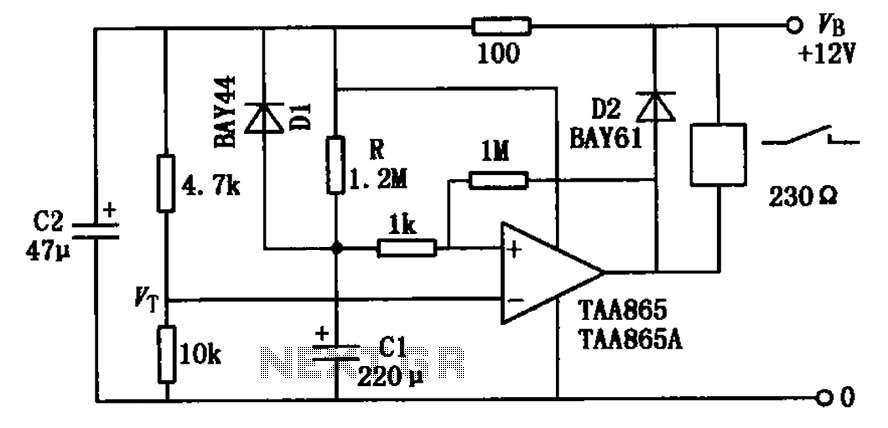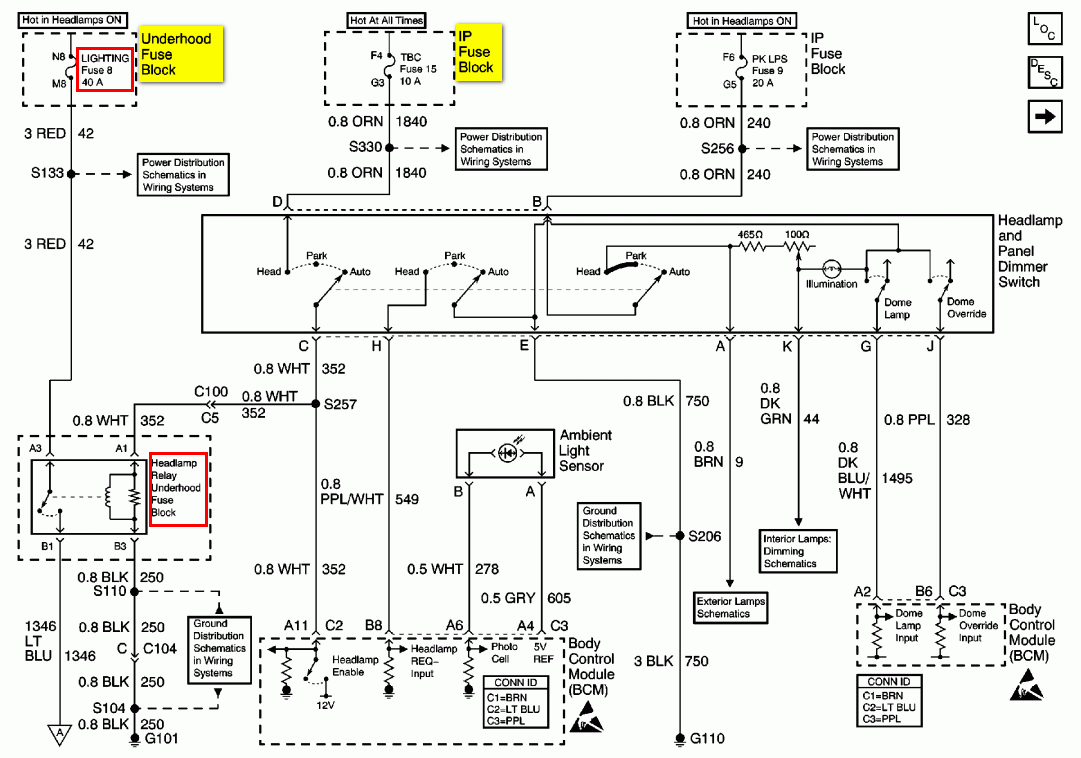
what relay should i use parallel port
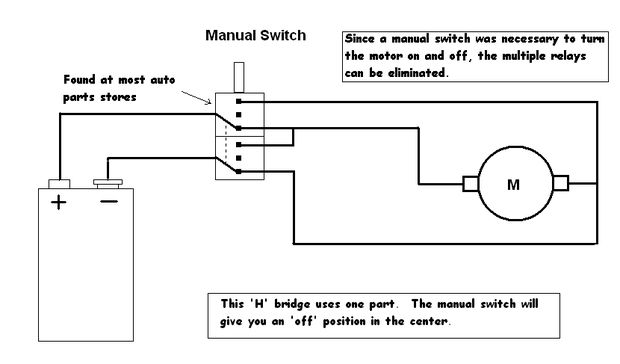
Control a toy car. The toy car is operated via a wired controller, rather than being radio-controlled. The intention is to utilize relays to control the toy through a parallel port. There are various types and models of relays, and information is sought on the most suitable options for this application. Additionally, there is a desire to use the parallel port to control a desk lamp that operates on AC power, necessitating the model number of a relay capable of this task. Due to limited access to electronic components in the region and the unavailability of online purchasing options, multiple relay model numbers are requested. The parallel port by itself will not directly drive relays (operating at 0V and approximately 3.5V). An external power supply (12V or 24V) is recommended to match commonly available relays, along with an NPN switching transistor to drive the relay coil. A 1K resistor should be used between the parallel port pin and the transistor base, and a silicon rectifier (1N400x type) should be placed across the relay coil (anode to collector, cathode to V+). This configuration allows the use of commonly available automotive 12V relays. Information is also requested regarding software for controlling the parallel port, noting compatibility with Windows XP and earlier operating systems, as well as Linux. The inquiry includes whether there are relays that can be switched directly from the parallel port without a transistor. A test is suggested to determine the voltage output of the parallel port, which would inform the suitability of a solid-state relay (SSR). The discussion also highlights that not all SSRs are the same and emphasizes the importance of understanding the parallel port's current sourcing and sinking capabilities, as well as the nature of the load being driven.
To control a toy car and a desk lamp using a parallel port, a relay-based circuit can be designed. The circuit requires a parallel port interface to manage the control signals. Since the parallel port typically outputs low voltage levels (around 3.5V), it cannot directly energize a relay coil. Therefore, an external power supply is necessary to provide the required voltage for the relay operation.
For this application, a common relay type is the automotive relay, which operates at 12V. This choice is due to the availability of automotive relays in many regions. The relay should be selected based on its current and voltage ratings to ensure it can handle the load of the toy car's motor and the desk lamp. The use of an NPN transistor (such as the 2N2222) is recommended to switch the relay. The transistor acts as a switch that is controlled by the parallel port output. A 1K ohm resistor is connected between the parallel port pin and the base of the transistor, limiting the current flowing into the base.
When the parallel port pin is set high, the transistor turns on, allowing current to flow through the relay coil, energizing it and closing the relay contacts. This action can switch the power from the external supply to the load (the motor of the toy car or the lamp). A flyback diode, such as the 1N4001, should be placed in parallel with the relay coil to protect the circuit from voltage spikes generated when the relay is de-energized.
In terms of software, a simple program can be written to control the parallel port pins, allowing for the operation of the toy car and lamp. The software should be compatible with the operating system in use and should allow for easy manipulation of the port pins to turn the devices on and off as desired.
For direct control without a transistor, solid-state relays (SSRs) can be considered, but they must be compatible with the output voltage of the parallel port. Testing the voltage across a resistor connected to the parallel port can help determine whether the port can directly drive an SSR. If the voltage is sufficient (3V or higher), suitable SSRs can be identified for the application.
In conclusion, careful consideration of relay types, circuit configuration, and software compatibility is essential for successfully controlling the toy car and desk lamp through a parallel port.Control a car toy. The toy car is controlled via a controller that is connected to it via a wire, so it`s not radio controlled. I would like to use relays to control toy via parallel port. I think there are many relay types and models, and I would like to know which one is the most suitable one for this case.
[ I never used relays before] Also, I may try to use the parallel port to control a desk lamp that runs on AC power, so I need the model number of a relay that can be used in this case [any circuit schematic would be appreciated too Note: In my country, it is very hard to get electronic components, and getting them online is not an available option for me, so can you please give me more than one model number of relays that can do the thing I need The parallel port will not directly drive relays (0V and ~3. 5V). Your best bet is to use an external power supply (12 or 24V to match commonly available relays) and use a NPN switching transistor to drive the relay coil.
Use a 1K resistor between the parallel port pin and the base of the transistor. Use a silicon rectifier (1N400x type) as a snubber across the relay coil; anode to collector, cathode to V+. This way you should be able to use commonly available automotive 12V relays. This link is very good to get you started using the parallel port and shows exactly what MikeMI was getting at using transistors.
The link also has dozens of other useful links. Additionally this other link is for a relay card designed for parallel port operation. The nice thing is they give a link to their board showing the circuit in schematic form. Also very good is a link to their software for controlling a parallel port. Something I noticed is the above software will run on Windows XP and earlier Microsoft operating systems as well as Linux. Newer systems like Vista and Windows 7 don`t run it. Thanks for helping, but I want a relay model that can be switched directly from the Parallel Port [no transistor].
Isn`t there a relay that can be switched directly from Parallel Port. I want a relay model that can be switched directly from the Parallel Port [no transistor]. Isn`t there a relay that can be switched directly from Parallel Port Do this test. Write a 1 to a given pin on your parallel port. Tie a 1K resistor from that pin to one of the PP ground pins. Measure the voltage across the resistor. If you get three volts or more, then your port will drive the SSR. If less than three volts, then you will need some sort of powered driver. You could steal 5V to power a driver off the USB. Did you try as Mike suggested If you place a 1 K © resistor and drive the bit high and measure at least 3 volts or more it tells you that the port can source at least 3 mA. No, not all SSRs are the same. Much like all parallel ports are not the same. If you had taken the time to read the first link I posted you would have a basic understanding of what a parallel port can sink or source as to current.
You haven`t mentioned what you want to drive with the parallel port That would be a big factor in determining what SSR may or may not work for your application. There are hundreds of SSRs out there. Additionally short of a DC SSR using an everyday SSR assumes your load will be AC and not DC. Planning on an AC load The relay is switching the car`s internal battery voltage to a motor, right Is so, you dont need a relay, you just need a transistor whose base is supplied by the PP, and whose collector circuit switches one end of the motor to battery -, while the battery+ is tied to the other end of the motor.
Still only two wires running from the PP to the car; the transistor will be located in the car. Did you try as Mike suggested If you place a 1 K © resistor and drive the bit high and measure at least 3 volts or more it tells you that the port can source at least 3 mA. No, not all SSRs are the same. Much like all parallel ports are 🔗 External reference
To control a toy car and a desk lamp using a parallel port, a relay-based circuit can be designed. The circuit requires a parallel port interface to manage the control signals. Since the parallel port typically outputs low voltage levels (around 3.5V), it cannot directly energize a relay coil. Therefore, an external power supply is necessary to provide the required voltage for the relay operation.
For this application, a common relay type is the automotive relay, which operates at 12V. This choice is due to the availability of automotive relays in many regions. The relay should be selected based on its current and voltage ratings to ensure it can handle the load of the toy car's motor and the desk lamp. The use of an NPN transistor (such as the 2N2222) is recommended to switch the relay. The transistor acts as a switch that is controlled by the parallel port output. A 1K ohm resistor is connected between the parallel port pin and the base of the transistor, limiting the current flowing into the base.
When the parallel port pin is set high, the transistor turns on, allowing current to flow through the relay coil, energizing it and closing the relay contacts. This action can switch the power from the external supply to the load (the motor of the toy car or the lamp). A flyback diode, such as the 1N4001, should be placed in parallel with the relay coil to protect the circuit from voltage spikes generated when the relay is de-energized.
In terms of software, a simple program can be written to control the parallel port pins, allowing for the operation of the toy car and lamp. The software should be compatible with the operating system in use and should allow for easy manipulation of the port pins to turn the devices on and off as desired.
For direct control without a transistor, solid-state relays (SSRs) can be considered, but they must be compatible with the output voltage of the parallel port. Testing the voltage across a resistor connected to the parallel port can help determine whether the port can directly drive an SSR. If the voltage is sufficient (3V or higher), suitable SSRs can be identified for the application.
In conclusion, careful consideration of relay types, circuit configuration, and software compatibility is essential for successfully controlling the toy car and desk lamp through a parallel port.Control a car toy. The toy car is controlled via a controller that is connected to it via a wire, so it`s not radio controlled. I would like to use relays to control toy via parallel port. I think there are many relay types and models, and I would like to know which one is the most suitable one for this case.
[ I never used relays before] Also, I may try to use the parallel port to control a desk lamp that runs on AC power, so I need the model number of a relay that can be used in this case [any circuit schematic would be appreciated too Note: In my country, it is very hard to get electronic components, and getting them online is not an available option for me, so can you please give me more than one model number of relays that can do the thing I need The parallel port will not directly drive relays (0V and ~3. 5V). Your best bet is to use an external power supply (12 or 24V to match commonly available relays) and use a NPN switching transistor to drive the relay coil.
Use a 1K resistor between the parallel port pin and the base of the transistor. Use a silicon rectifier (1N400x type) as a snubber across the relay coil; anode to collector, cathode to V+. This way you should be able to use commonly available automotive 12V relays. This link is very good to get you started using the parallel port and shows exactly what MikeMI was getting at using transistors.
The link also has dozens of other useful links. Additionally this other link is for a relay card designed for parallel port operation. The nice thing is they give a link to their board showing the circuit in schematic form. Also very good is a link to their software for controlling a parallel port. Something I noticed is the above software will run on Windows XP and earlier Microsoft operating systems as well as Linux. Newer systems like Vista and Windows 7 don`t run it. Thanks for helping, but I want a relay model that can be switched directly from the Parallel Port [no transistor].
Isn`t there a relay that can be switched directly from Parallel Port. I want a relay model that can be switched directly from the Parallel Port [no transistor]. Isn`t there a relay that can be switched directly from Parallel Port Do this test. Write a 1 to a given pin on your parallel port. Tie a 1K resistor from that pin to one of the PP ground pins. Measure the voltage across the resistor. If you get three volts or more, then your port will drive the SSR. If less than three volts, then you will need some sort of powered driver. You could steal 5V to power a driver off the USB. Did you try as Mike suggested If you place a 1 K © resistor and drive the bit high and measure at least 3 volts or more it tells you that the port can source at least 3 mA. No, not all SSRs are the same. Much like all parallel ports are not the same. If you had taken the time to read the first link I posted you would have a basic understanding of what a parallel port can sink or source as to current.
You haven`t mentioned what you want to drive with the parallel port That would be a big factor in determining what SSR may or may not work for your application. There are hundreds of SSRs out there. Additionally short of a DC SSR using an everyday SSR assumes your load will be AC and not DC. Planning on an AC load The relay is switching the car`s internal battery voltage to a motor, right Is so, you dont need a relay, you just need a transistor whose base is supplied by the PP, and whose collector circuit switches one end of the motor to battery -, while the battery+ is tied to the other end of the motor.
Still only two wires running from the PP to the car; the transistor will be located in the car. Did you try as Mike suggested If you place a 1 K © resistor and drive the bit high and measure at least 3 volts or more it tells you that the port can source at least 3 mA. No, not all SSRs are the same. Much like all parallel ports are 🔗 External reference

